The Last Dinosaur Chomps Your Nostalgia on Warner Archive DVD
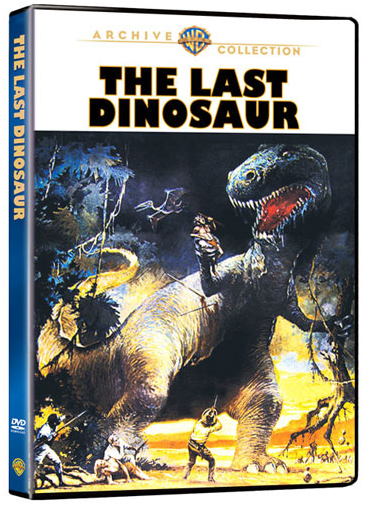 It follows that if I write about The Bermuda Depths and its manufacture-on-demand DVD release, I must also write about its sister film, the dinosaur-hunting marvel of a Saturday afternoon dreamland, 1977’s The Last Dinosaur — also available on MOD DVD from Warner Archive. “Richard Boone vs. a T. Rex in a Primeval World.” You don’t need a large marketing team to work on your movie if you have a tagline like that.
It follows that if I write about The Bermuda Depths and its manufacture-on-demand DVD release, I must also write about its sister film, the dinosaur-hunting marvel of a Saturday afternoon dreamland, 1977’s The Last Dinosaur — also available on MOD DVD from Warner Archive. “Richard Boone vs. a T. Rex in a Primeval World.” You don’t need a large marketing team to work on your movie if you have a tagline like that.
The Last Dinosaur is a 1950s giant monster movie filmed in the 1970s and filtered through the visual effects style of 1960s Japanese special effects (tokusatsu) films. If that sentence gives you a frisson of joy, then the movie won’t disappoint. And The Last Dinosaur is a touch better than that description suggests, with a solid script and an excellent main character who can carry the outrageousness of a giant monster movie and make it seem like Moby Dick.
Touring around the ‘net looking for reviews of The Last Dinosaur will mostly unearth “bad movie snark” having a laugh over its economical special effects. You won’t find much of that here: I think The Last Dinosaur is a top-shelf B-budgeted “lost world” film that delivers all it should, occasional chuckles and groans included. Make all the sly comments you want about the “man-in-suit” monster effects — and there are some amusing moments — they still offer far more creativity and fun than most CGI-driven contemporary movies. Compare The Last Dinosaur to anything from SyFy and you’ll see the talent we lost when the Machines won the war.
Shot in Japan at the same time Amicus Productions in the U.K. was making their Edgar Rice Burroughs adaptations (The Land That Time Forgot, At the Earth’s Core, The People That Time Forgot), The Last Dinosaur sports a similar style that captures the spirit of ERB within a contemporary setting. It’s the best Edgar Rice Burroughs adaptation not actually based on one of his novels; if Burroughs were alive and writing in the 1970s, he might have written something just like this.
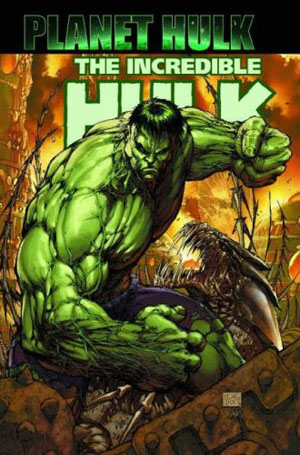
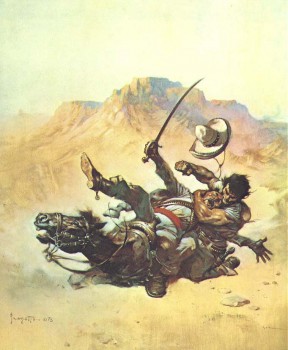
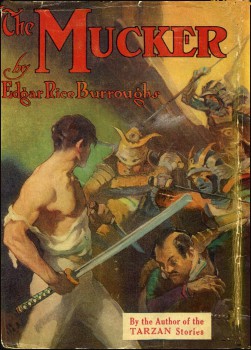
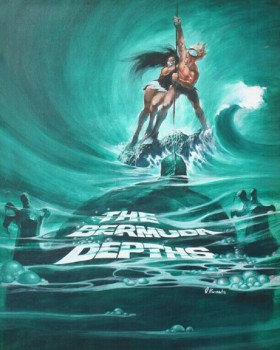
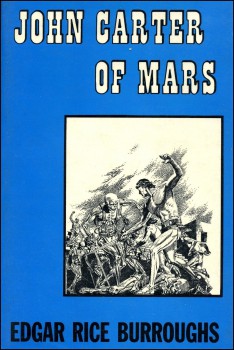 So it ends here, not with a climatic epic, but with a bit of house cleaning almost fifteen years after the author’s death. The final book in Edgar Rice Burroughs’s career-spanning Barsoom saga is a slender volume containing two unrelated novellas.
So it ends here, not with a climatic epic, but with a bit of house cleaning almost fifteen years after the author’s death. The final book in Edgar Rice Burroughs’s career-spanning Barsoom saga is a slender volume containing two unrelated novellas.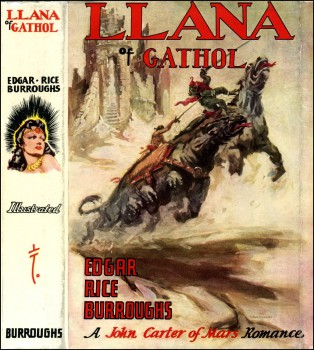 Back on Mars, and closing in on its finale, after my short sabbatical… What can I say? It seems Synthetic Men of Mars will suck out the desire to keep trudging forward from even the most dedicated ERB enthusiast.
Back on Mars, and closing in on its finale, after my short sabbatical… What can I say? It seems Synthetic Men of Mars will suck out the desire to keep trudging forward from even the most dedicated ERB enthusiast. November is almost here, which means for tens of thousands of people spanning the globe the time has come to crunch numbers over thirty days to maximize their ability to write at least fifty thousands words of a novel. It is called National Novel Writing Month (NaNoWriMo), and by this point most of you with any connection to the world of books — whether writing, reading, wholesaling, or propping up the couch — have heard of this social creative writing event. In fact, I expect “NaNoWriMo” and “WriMos” to enter the Oxford American Dictionary within a few years.
November is almost here, which means for tens of thousands of people spanning the globe the time has come to crunch numbers over thirty days to maximize their ability to write at least fifty thousands words of a novel. It is called National Novel Writing Month (NaNoWriMo), and by this point most of you with any connection to the world of books — whether writing, reading, wholesaling, or propping up the couch — have heard of this social creative writing event. In fact, I expect “NaNoWriMo” and “WriMos” to enter the Oxford American Dictionary within a few years.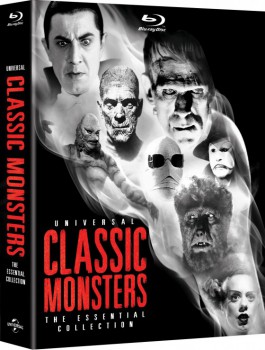 This year, the home video divisions of all the major distributors banded together and plotted a full-scale assault on the wallets and bank accounts of Blu-ray owners during September and October. Only the wealthiest could possibly survive an attack that began with the first Hi-Def release of the Indiana Jones films. But the supreme weapon, the ultimate October Surprise, is Universal’s huge ebony slab of fear, nostalgia, and latex make-up: Universal Classic Monsters: The Essential Collection. Spanning twenty-three years and nine films (advertised as eight, sorry Spanish Dracula), the long-anticipated set brings the Masters of Halloween into glorious 1080p for the first time, and in perfect seasonal position to drain your money before you waste it on a Jack Sparrow costume that forty other people are also going to wear to that same party.
This year, the home video divisions of all the major distributors banded together and plotted a full-scale assault on the wallets and bank accounts of Blu-ray owners during September and October. Only the wealthiest could possibly survive an attack that began with the first Hi-Def release of the Indiana Jones films. But the supreme weapon, the ultimate October Surprise, is Universal’s huge ebony slab of fear, nostalgia, and latex make-up: Universal Classic Monsters: The Essential Collection. Spanning twenty-three years and nine films (advertised as eight, sorry Spanish Dracula), the long-anticipated set brings the Masters of Halloween into glorious 1080p for the first time, and in perfect seasonal position to drain your money before you waste it on a Jack Sparrow costume that forty other people are also going to wear to that same party.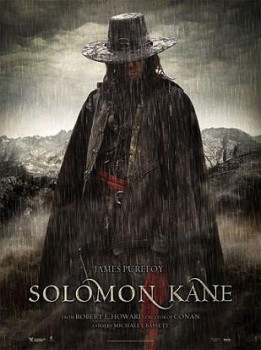 The sixteenth- and early seventeenth-century Puritan adventurer Solomon Kane is my favorite of Robert E. Howard’s serial characters: a fascinating mixture of obsession, religion, righteousness, history, and dark fantasy awesomeness. However, it’s the character I love, not necessarily the stories in which he appeared. With the exception of “Wings in the Night,” the Solomon Kane stories are mid-range pieces in Howard’s canon, not at the consistent level he delivered later with Conan, King Kull, or many of his one-shots. Solomon Kane appeared early in Howard’s short professional pulp career, with the first published story in the August 1928 issue of Weird Tales. Perhaps if Howard stayed longer with the Puritan hero while his storytelling skills increased, he might have equaled the Conan series in quality.
The sixteenth- and early seventeenth-century Puritan adventurer Solomon Kane is my favorite of Robert E. Howard’s serial characters: a fascinating mixture of obsession, religion, righteousness, history, and dark fantasy awesomeness. However, it’s the character I love, not necessarily the stories in which he appeared. With the exception of “Wings in the Night,” the Solomon Kane stories are mid-range pieces in Howard’s canon, not at the consistent level he delivered later with Conan, King Kull, or many of his one-shots. Solomon Kane appeared early in Howard’s short professional pulp career, with the first published story in the August 1928 issue of Weird Tales. Perhaps if Howard stayed longer with the Puritan hero while his storytelling skills increased, he might have equaled the Conan series in quality.